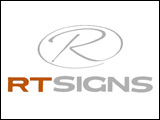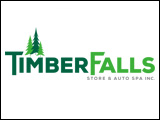The following article is the third in a series leading us to our 50th anniversary celebrations in 2014. It provides insight into the contributions of John C. Reimer, one of the founders of Mennonite Heritage Village. The article is written by his son, Arnold Reimer, a retired educator and former member of the MHV Board of Directors. Arnold lives in Winnipeg and remains a strong supporter of this museum. Here is what he would like to share with us about his father:
John C. Reimer’s Museum Vision
“John C. Reimer’s commitment to tell the Mennonite story probably dates back to the 1920’s, when, as a young teacher, he left the Mennonite German private schools to teach in Manitoba’s new public school system. He defended his decision to Kleine Gemeinde elders, arguing that Mennonite teachers in the public schools could help sustain Mennonite culture.
“John began demonstrating pioneer artifacts to enhance his Mennonite history lessons. In 1934, for example, he had his students at Blumenhof School build a semlin (sod hut) on the school yard, to give them an authentic appreciation of Mennonite pioneer life. He began buying articles for a personal antiques collection.
“In 1951 John located his grandfather Klaas R. Reimer’s store – the first store in Steinbach – being used as a chicken coop. John purchased it, moved it to his lot on the northwest end of Steinbach’s main street, furnished it with some of the original display fixtures he had already obtained, and stored his antiques collection in it. A sign on the building invited visits, by appointment only. Several Manitoba teachers’ bus tours visited in the 1950’s. The building is now located at Mennonite Heritage Village. Back in the 1950’s, however, John was owner, collector, curator, tour guide, and janitor – a one- man show.
“On April 25, 1958, West Reserve teacher Gerhard Ens invited John to a founding meeting of the Manitoba Mennonite Historical Society (MMHS) in Morris. Here John connected with a Manitoba-wide network of visionaries interested in preserving Mennonite history. A museum sub-committee was formed, and in 1960 Winnipeg financier and businessman Jacob J. Reimer became the museum committee chair, bringing invaluable financial and administrative leadership. John was no longer a lone eccentric with a collection of antiques. His idea for a museum had gained support.
“Steinbach was a logical location for a museum, largely because John already had a sizeable collection of artifacts on hand to serve as a starting nucleus. In the 1960’s John C. advocated the Kornelson house-barn property at the corner of Steinbach’s Main Street and Highway #12 as the museum location, but when the Kornelson buildings were found to be too deteriorated, the MMHS asked John to survey other possible sites. In 1961 he presented to the MMHS Board descriptions of three properties:
- the current site on Hwy 12 north of Steinbach,
- the Steinbach fair grounds, north of Hwy 52, west of town, and
- the JCR homestead “bush farm” south of Hwy 52, west of town
“After the MMHS board made its decision in 1961, John helped to administer the purchase of the initial 6-acre site on Hwy 12, and worked with the R.M. of Hanover to secure a zoning variation permitting a museum at that location.
“The museum soon grew far beyond what John C. had ever imagined in the beginning – beyond an “antique collection” to a restored building; beyond a restored building to a homestead; and finally beyond a homestead to a complete Mennonite village museum!”



